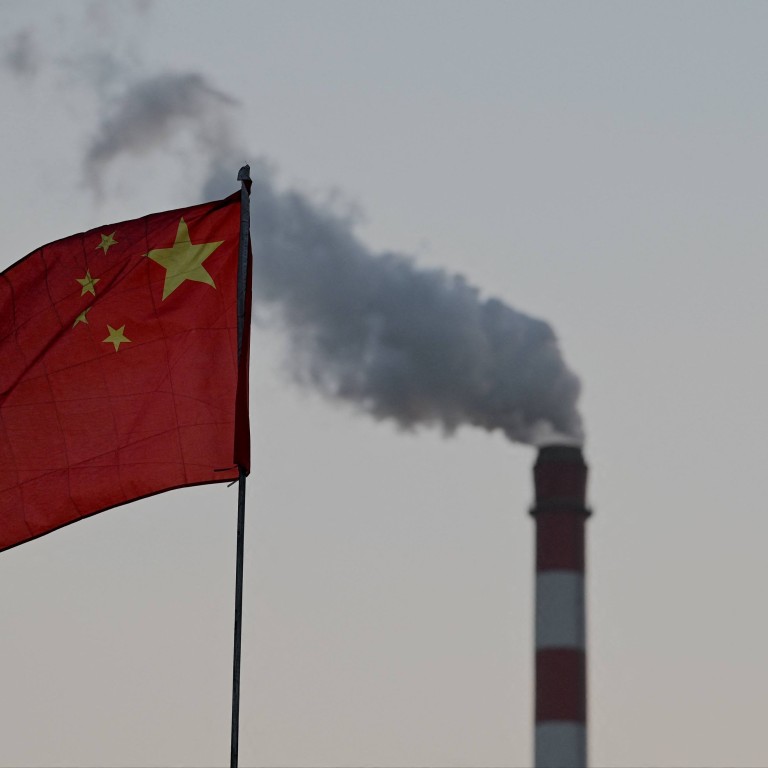
China’s new ESG disclosure guidelines need a forward-looking slant for international alignment, experts say
- The guidelines, comprising 127 environmental, social and governance (ESG) metrics and 373 sub-metrics, is the first China-focused disclosure standard
- They are ‘a helpful starting point and point of reference,’ said Alexander Chan, head of ESG client strategy for Asia-Pacific at Invesco
Published by the China Enterprise Reform and Development Society (CERDS), a state-backed think tank, its metrics are mostly aligned with international standards.
One exception, with “Chinese characteristics”, is the “civic duties” metric that pertains to the national development goals of rural revitalisation and common prosperity.
Initially, it will probably be mostly adopted by large companies, as smaller ones struggle to find the expertise and resources required to complete the disclosure exercise, he said.
Comprehensive ESG reporting is not yet mandatory for mainland-listed firms. Most Chinese companies listed in Hong Kong and abroad already have to make ESG disclosures required by the stock exchanges.
In the longer term, as China adopts the practices proposed by the International Sustainability Standards Board (ISSB), more forward-looking disclosures are expected, Chan said.
“China has publicly shown support for the standards proposed by the ISSB, which would be helpful reference for China when it develops its own disclosure regulations,” he said.
In May, China Securities and Regulatory Commission vice-chairman Fang Xinghai said the securities watchdog was preparing new reporting standards and would adopt the ISSB standards.
The ISSB, set up late last year, aims to consolidate various commonly used standards – including the Task Force on Climate-Related Financial Disclosures (TCFD) – and issue a new set of global baseline standards by the end of the year to meet the needs of lenders, investors and regulators.
TCFD requires forward-looking analysis and reporting of the estimated financial impact on companies from climate change, besides plans and strategies to transition to low carbon business models.
“The CERDS guidelines give you a list of ESG disclosure indicators that you can consider adopting, while TCFD is more about [going through a] process for a company to manage and govern its climate risks and opportunities,” Chan said.
While forward-looking climate-related disclosures will be required internationally, it is unclear how they can be verified, said Jason Tu Jianyu, CEO of Hong Kong-based ESG data provider Miotech.
He has recently been asked by mainland Chinese and Hong Kong securities regulators about ways to assess the robustness and reliability of such disclosures, he said.
“The big problem for industries and regulators is finding a consistent method to verify [forward looking] disclosures,” he said. “There are so many angles to look at and there are different ways to come up with the numbers, which make them hard to be audited.”
For example, a company may refer to national commitments on carbon reduction under the Paris Agreement, or the International Energy Agency’s pathways for reaching net zero by 2050 as the basis for its projections on climate change’s impact on its future revenues, asset valuation and cashflows.
Even so, Chinese financial firms and consumer goods exporters have been making progress on ESG disclosures thanks to industry-specific requirements.
“A lot of our clients are making ESG disclosures for the sake of securing their positions in the supply chain of their European and multinational customers,” Tu said.
A year ago, the People’s Bank of China issued a directive asking financial institutions to disclose the environmental impact of their green finance activities, as well as the carbon footprint of their loan and asset portfolios exposed to emission-intensive sectors.
It also required them to conduct pilot stress tests on their loan and investment portfolios and disclose potential losses, based on different future climate-change scenarios.


